A rubric template is a printable grading tool that defines scoring criteria for evaluating the performance of a student or employee and giving feedback, which is grading.
It is typically presented as a matrix that indicates the different levels of achievement (quality) in terms of performance and understanding.
It will state the teacher’s or employer’s expectations and the different levels of effectiveness in fulfilling those expectations. Its main components are areas of assessment (tasks), evaluation criteria (dimensions), performance levels (scale), and descriptions of the evaluation criteria or dimensions. They are used to assess and grade term papers, presentations, project reports, essays, the success of projects, and other particular assignments given to students or employees.
How are the rubric templates useful to a teacher or employer? Primarily, it provides a uniform framework and language for assessment. This way, performance quality can be defined and graded based on merit. They are also crucial in defining organizational standards as they indicate and define the characteristics of the expected level of performance.
Teachers and employers can then communicate to students and employees where they can go and how they will get there in terms of performance. In addition, they reduce the time and simplify the assessment and grading exercise. Rubrics can also justify feedback; why the teacher or employer graded the individual’s performance as they did.
Areas in which such templates are used include:
- Job interview scoring
- Decision-making
- General math projects
- Basic analytics, etc.
Editable Rubic Templates
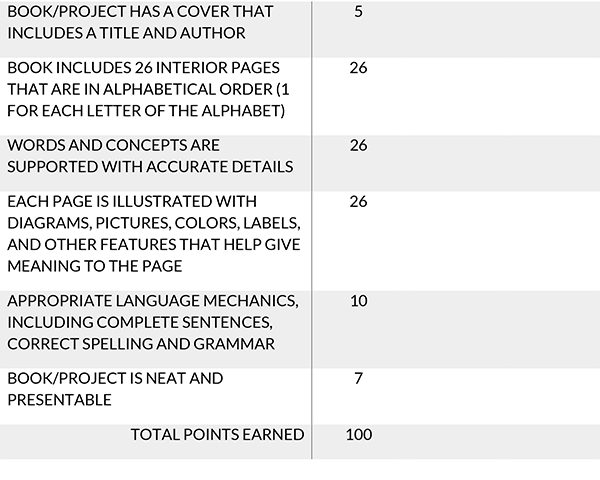
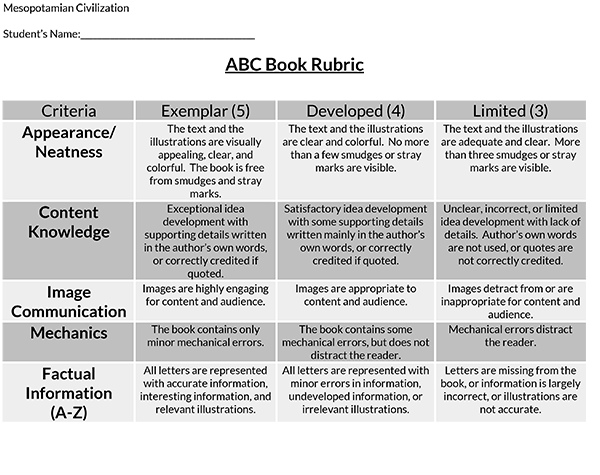
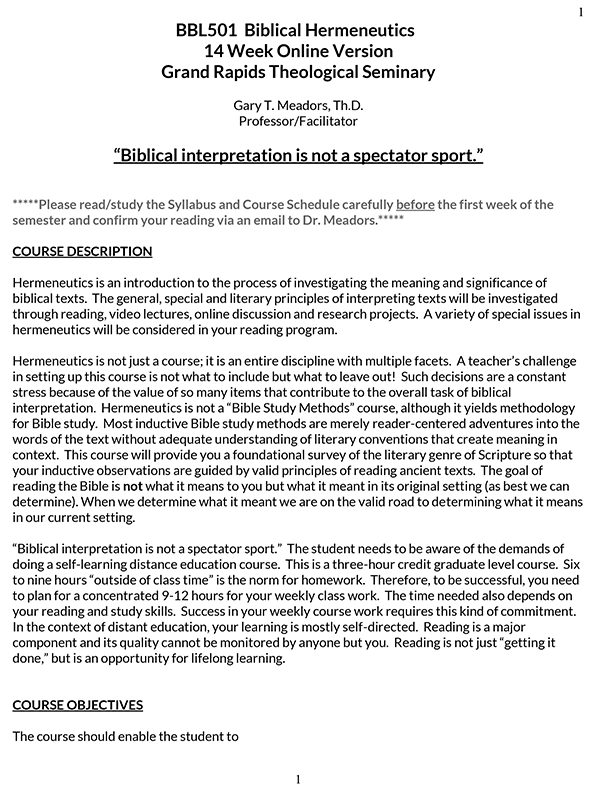
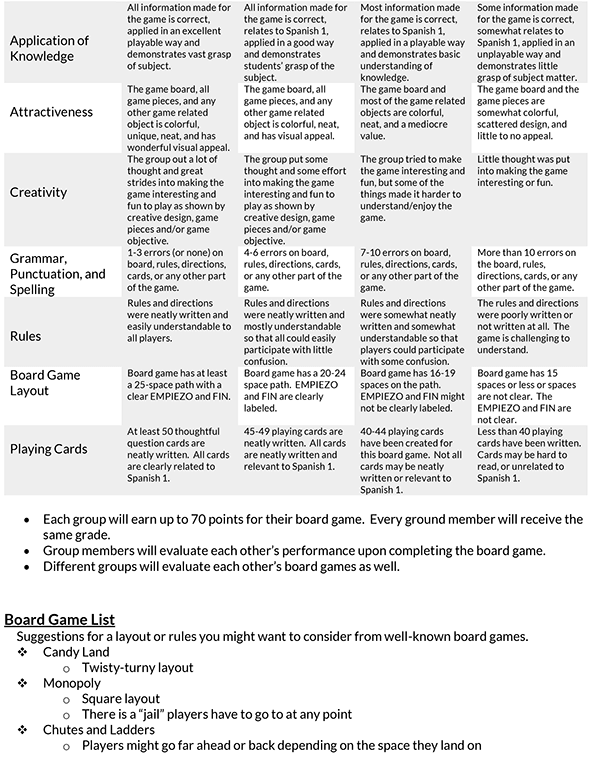
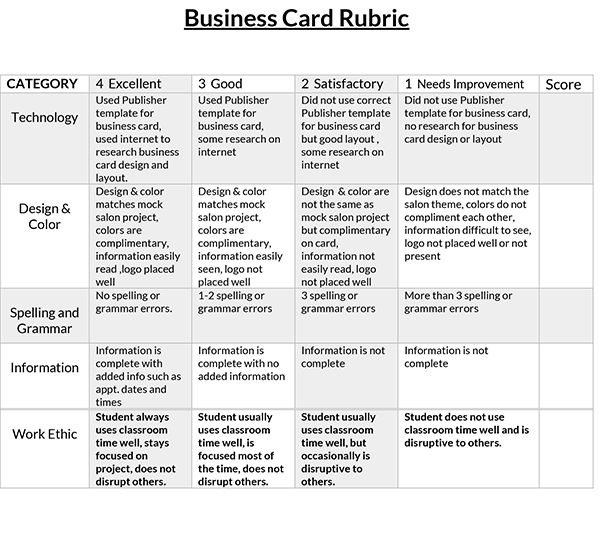
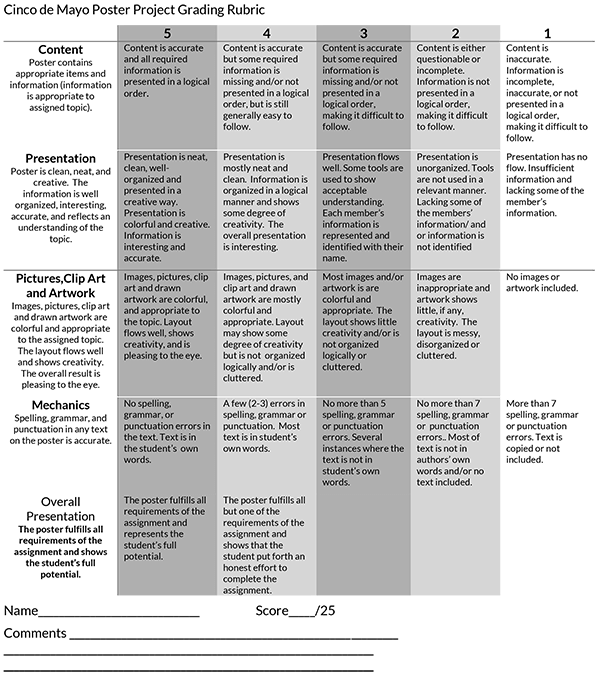
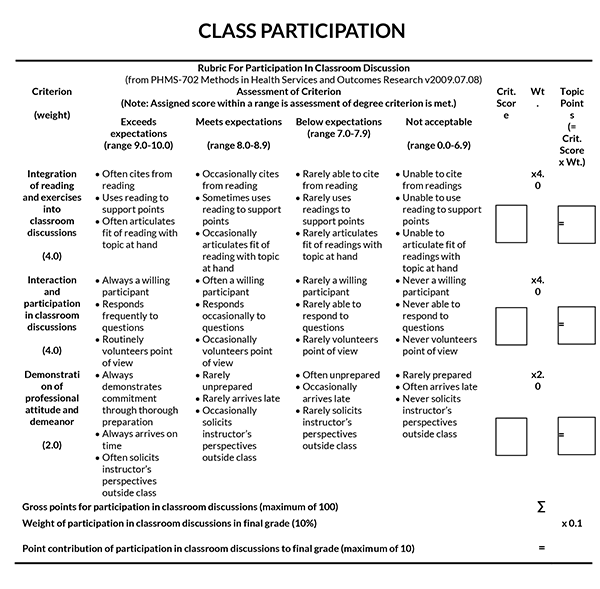
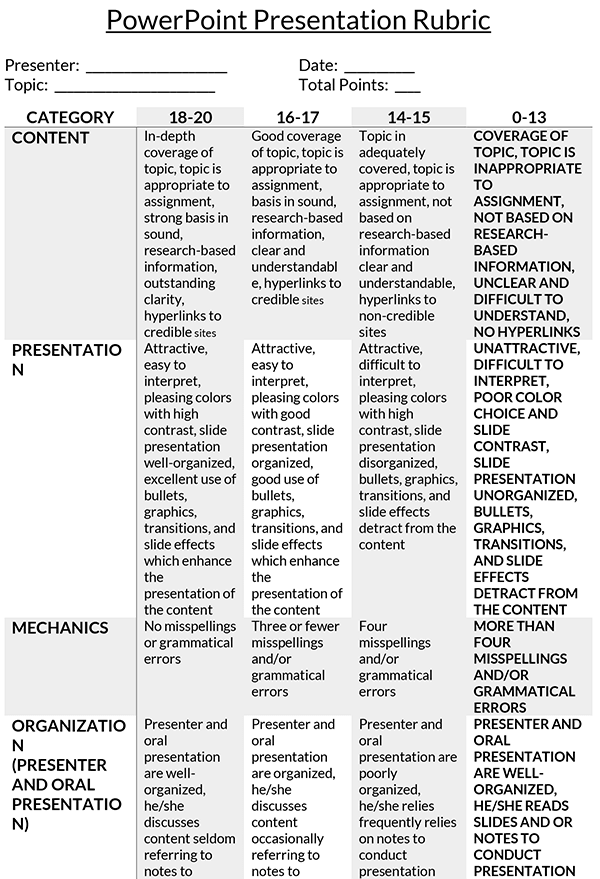
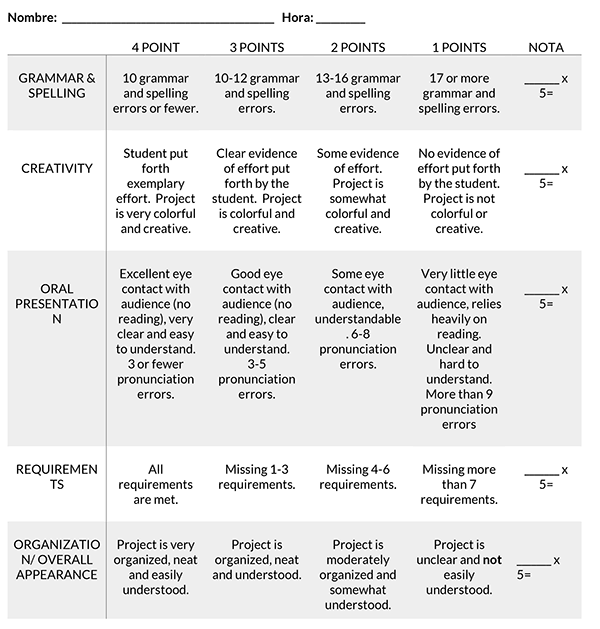



Rubric Template Types
When selecting a template, it is best to use one that can effectively meet the assessment needs at hand. The two common types are analytic and holistic rubrics. Below are the different types of templates:
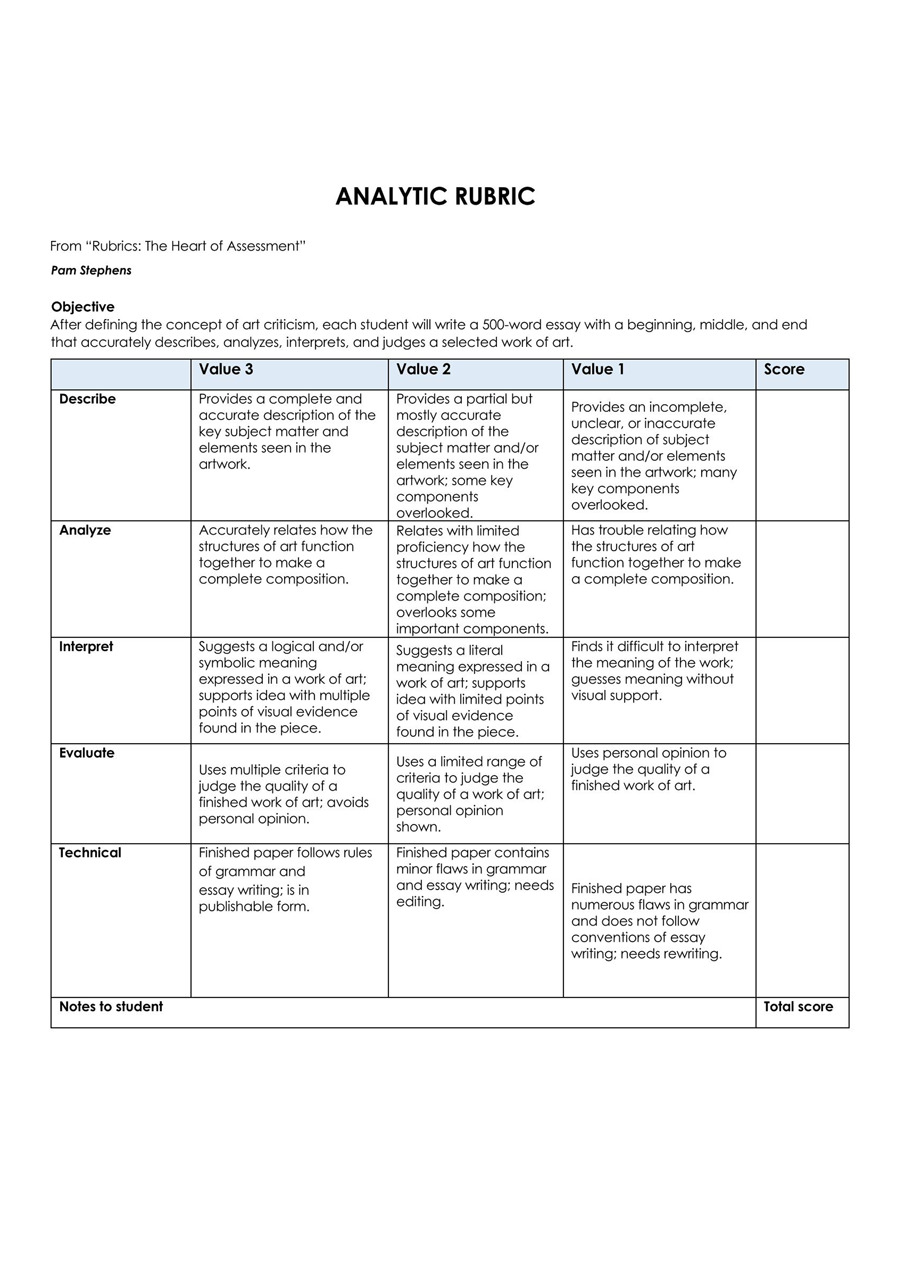
Analytic rubric template
Analytic rubrics evaluate and grade an assignment or work at each performance level. As a result, each performance level gets a separate score which typically requires at least two characteristics of that performance level to be assessed.
Download: Microsoft Word (.docx)
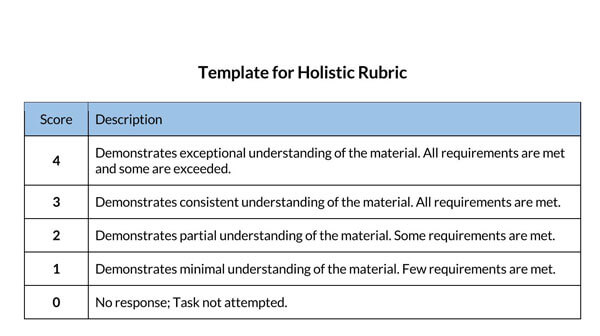
Holistic rubric template
A holistic rubric provides a generalized assessment and score for the assignment. It gives the overall student's or employee's performance based on all the criteria assessed. Holistic rubrics are suited for quick assessments and large group scoring. However, they are confined in that they are not detailed as they do not show specific performances at each level.
Download: Microsoft Word (.docx)
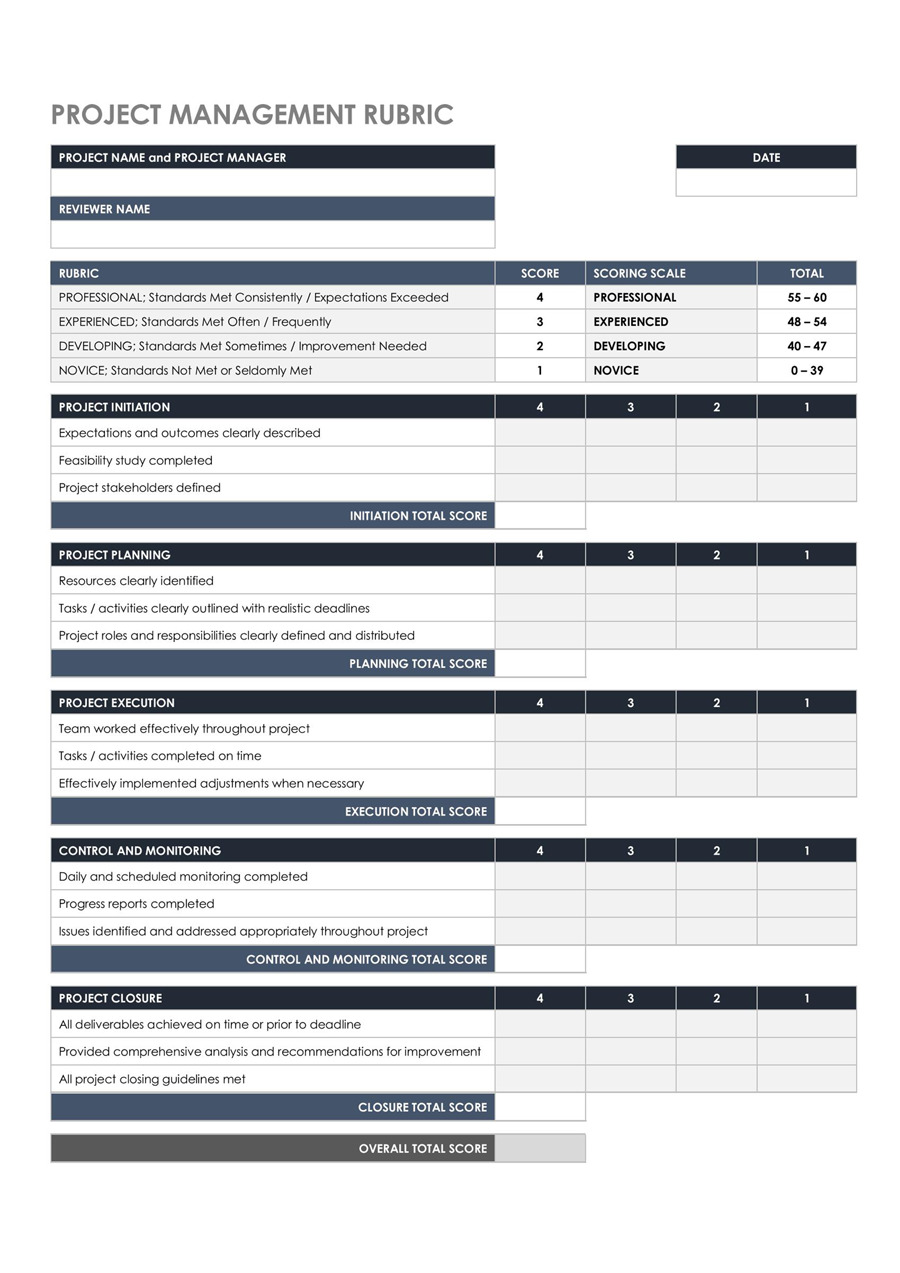
Project management rubric template
Rubrics are also used in project management to evaluate performance. The criteria used in project management rubrics are project phases, key objectives, and project milestones. The success metrics or indicators of each criterion are then listed as characteristics of levels of performance. A rating scale is used to measure performance.
Download: Microsoft Word (.docx)
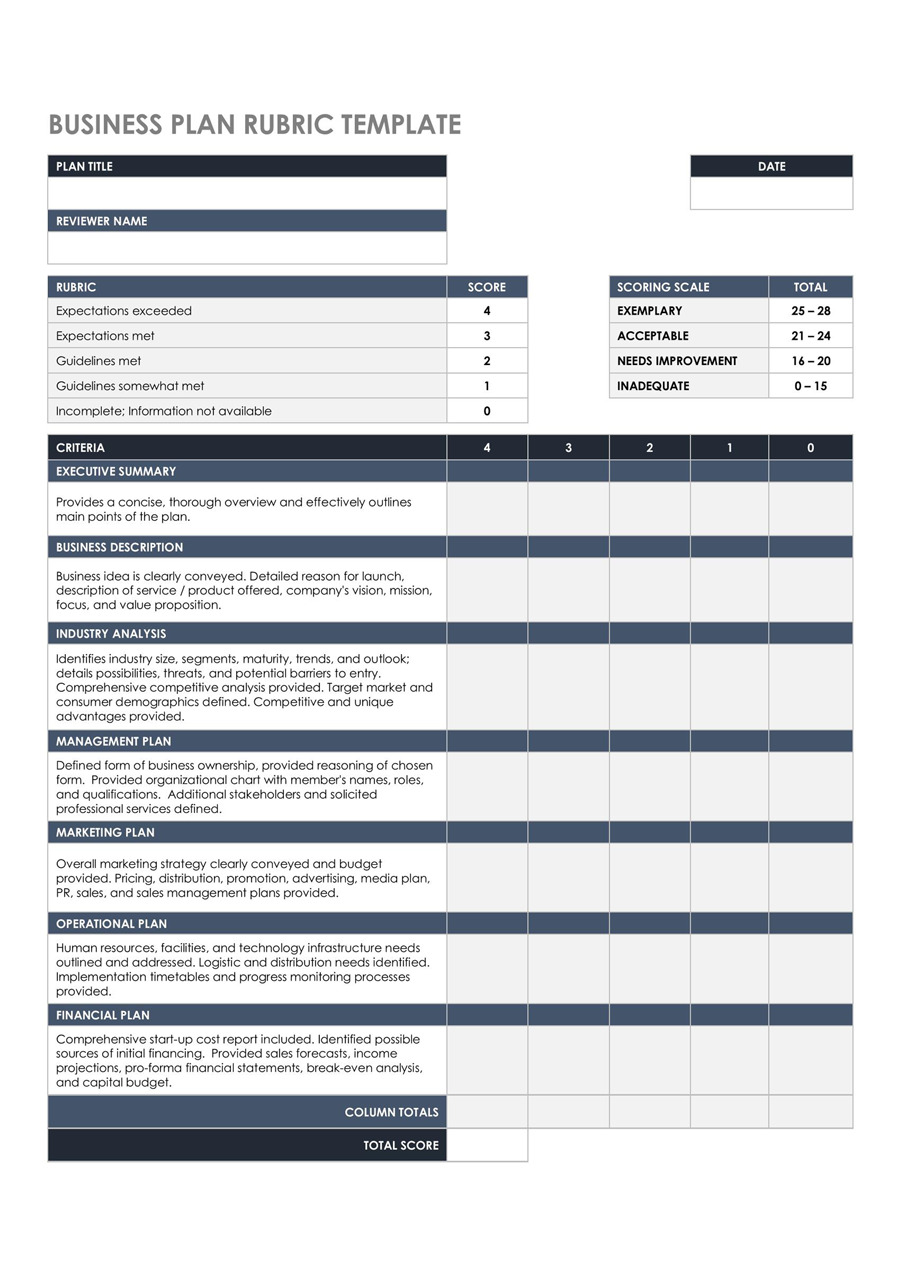
Business plan rubric template
The performance of a business plan can be assessed using a rubrics template. Components of the business plan such as mission statement, market analysis, operational plan, financial plan are used as criteria and are rated based on their quality. A business plan rubric template helps identify the strengths and weaknesses of a business plan before presentation or execution.
Download: Microsoft Word (.docx)
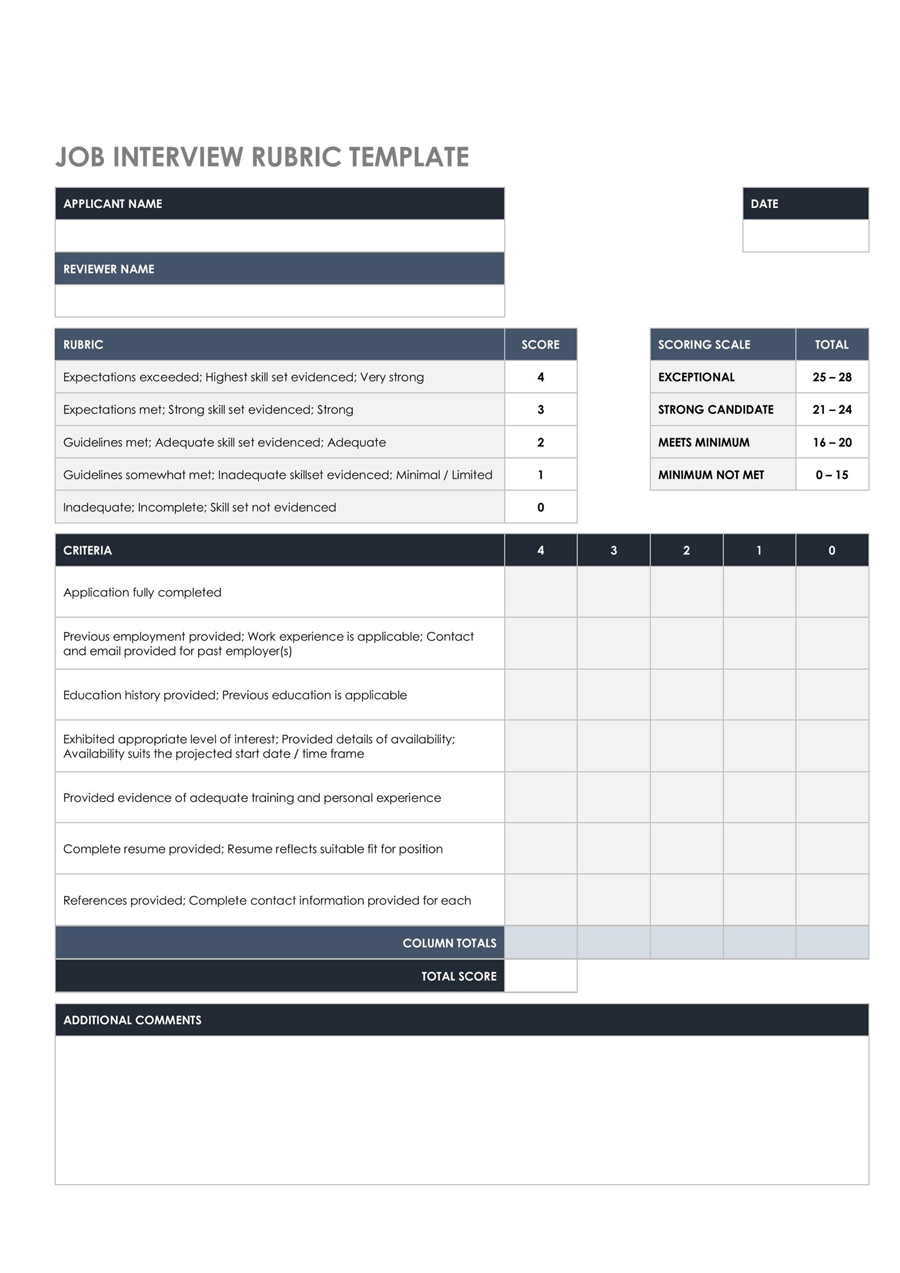
Job Interview Rubric Template
Job interviewers are popularly known to use rubrics to assess and score interviewees. Job qualifications and requirements such as academic qualification, professional experience, skills, and references can be used as criteria for evaluating performance.
Download: Microsoft Word (.docx)
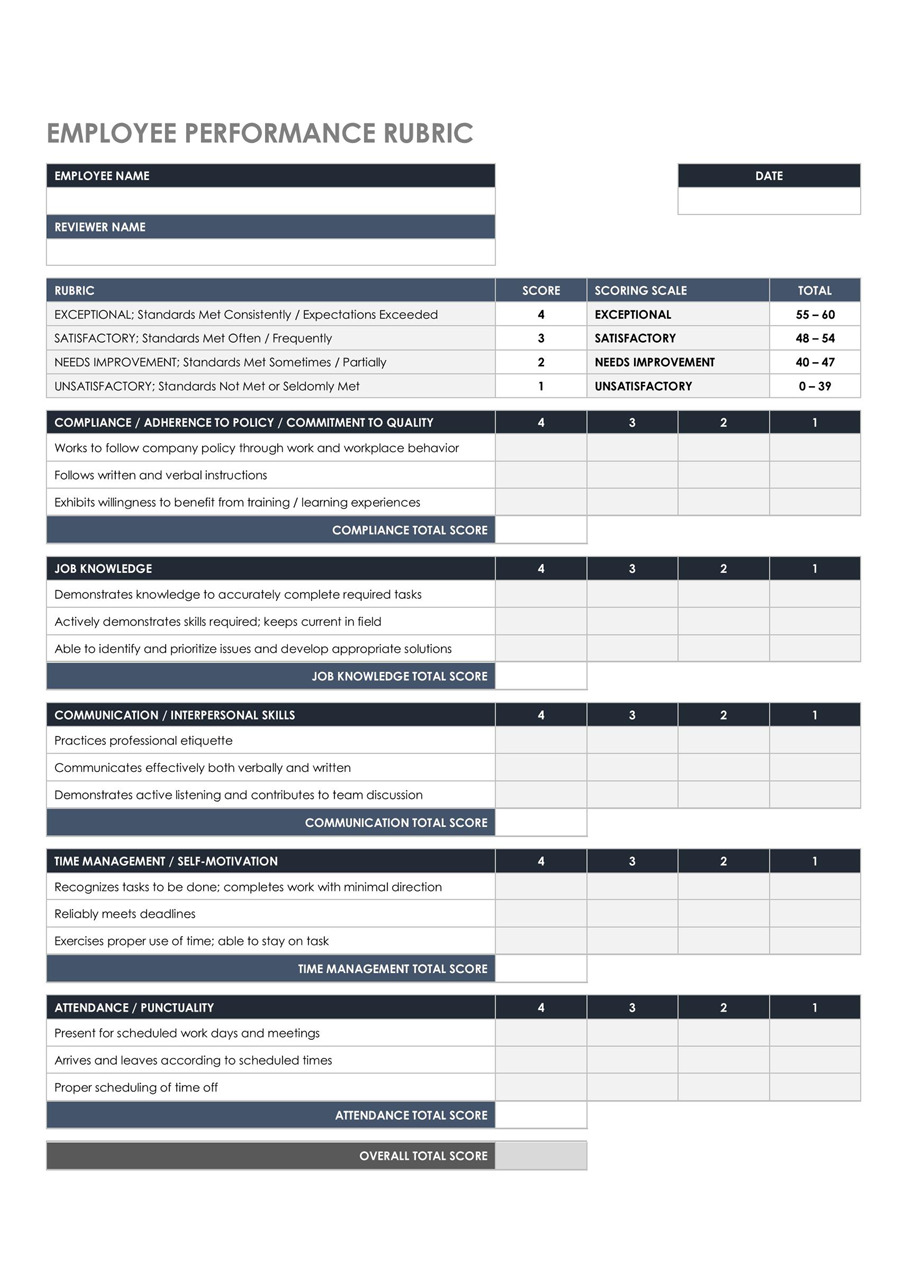
Employee Performance Rubric Template
Employee performance assessment is essential for HR management and boosting productivity. An employee performance rubric will take into consideration teamwork, attendance, time management, leadership, and other aspects that influence productivity.
Download: Microsoft Word (.docx)
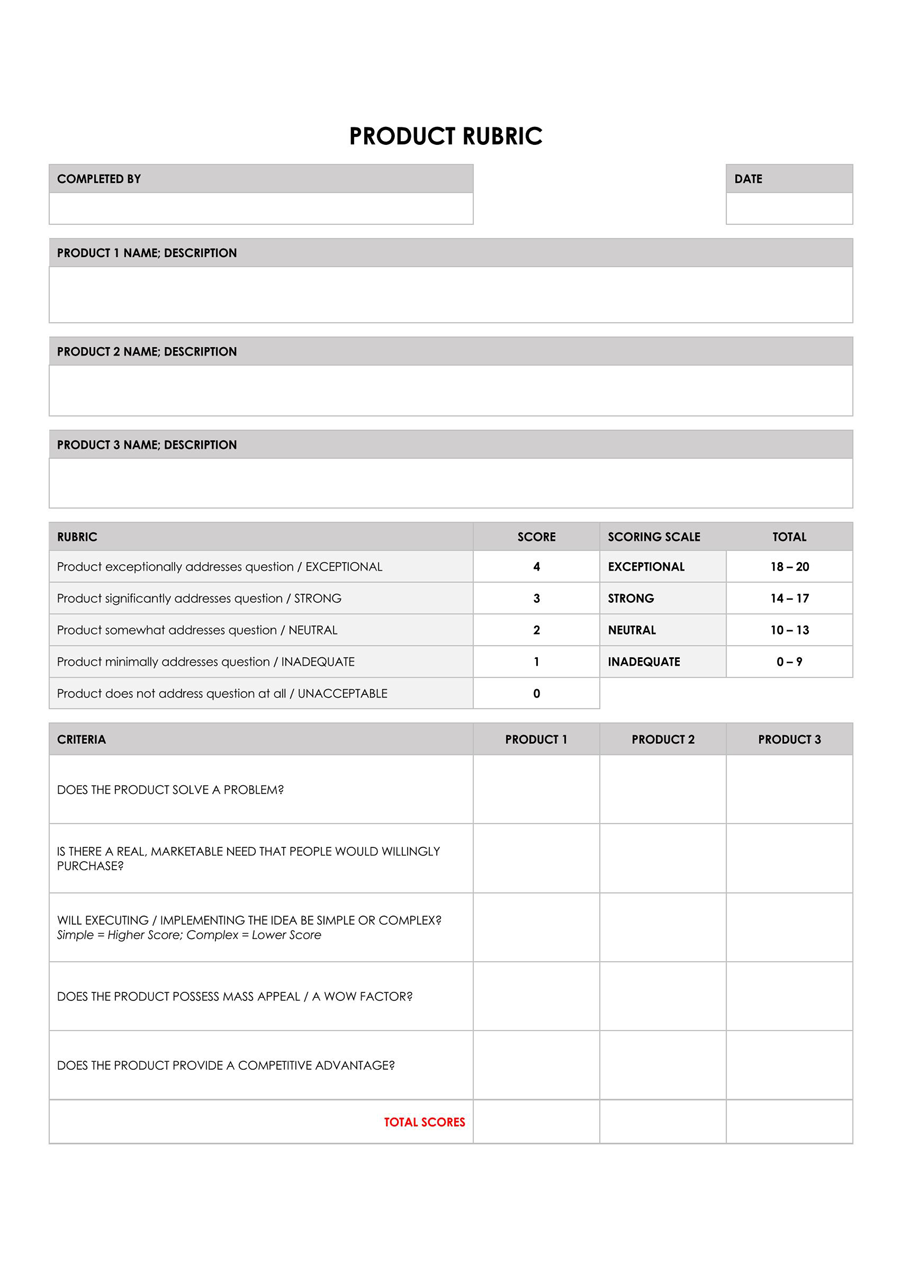
Product Rubric Template
Rubrics can be used in product research and decision-making. A rubric is used to assess how a new product or intended purchase aligns with business objectives. Factors considered when assessing a product are viability, demand, RoI, and other benefits that can be realized by its introduction. The performance of the product can be ranked and compared to those of other products to determine which product is worth investing in, the most beneficial.
Download: Microsoft Word (.docx)
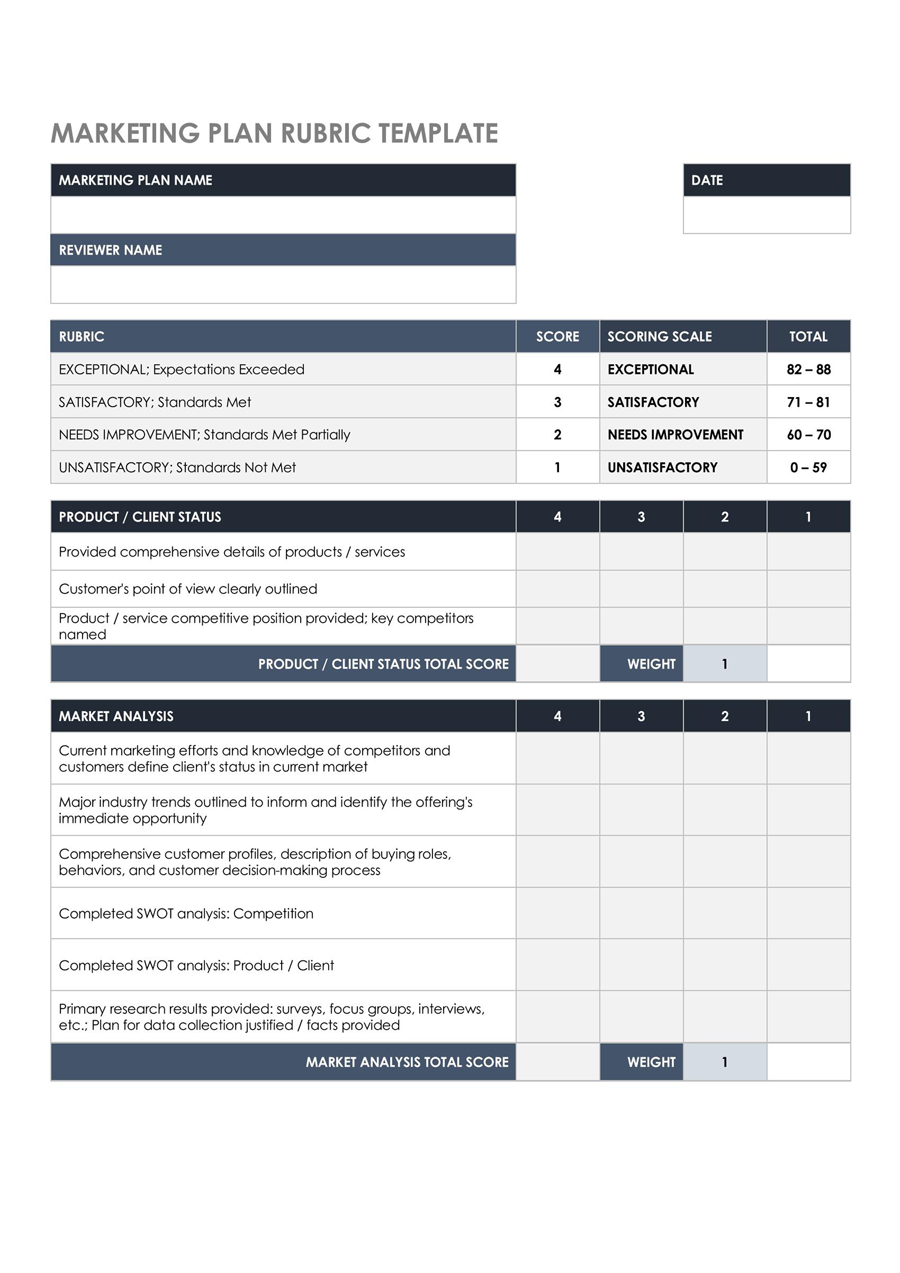
Marketing Plan Rubric Template
A marketing plan's success depends on multiple factors that can be assessed with a rubrics template. The rubric can evaluate how action items influence results and grade their performance. The overall score of the marketing plan is an indication of its effectiveness and can be used to determine areas of improvement.
Download: Microsoft Word (.docx)
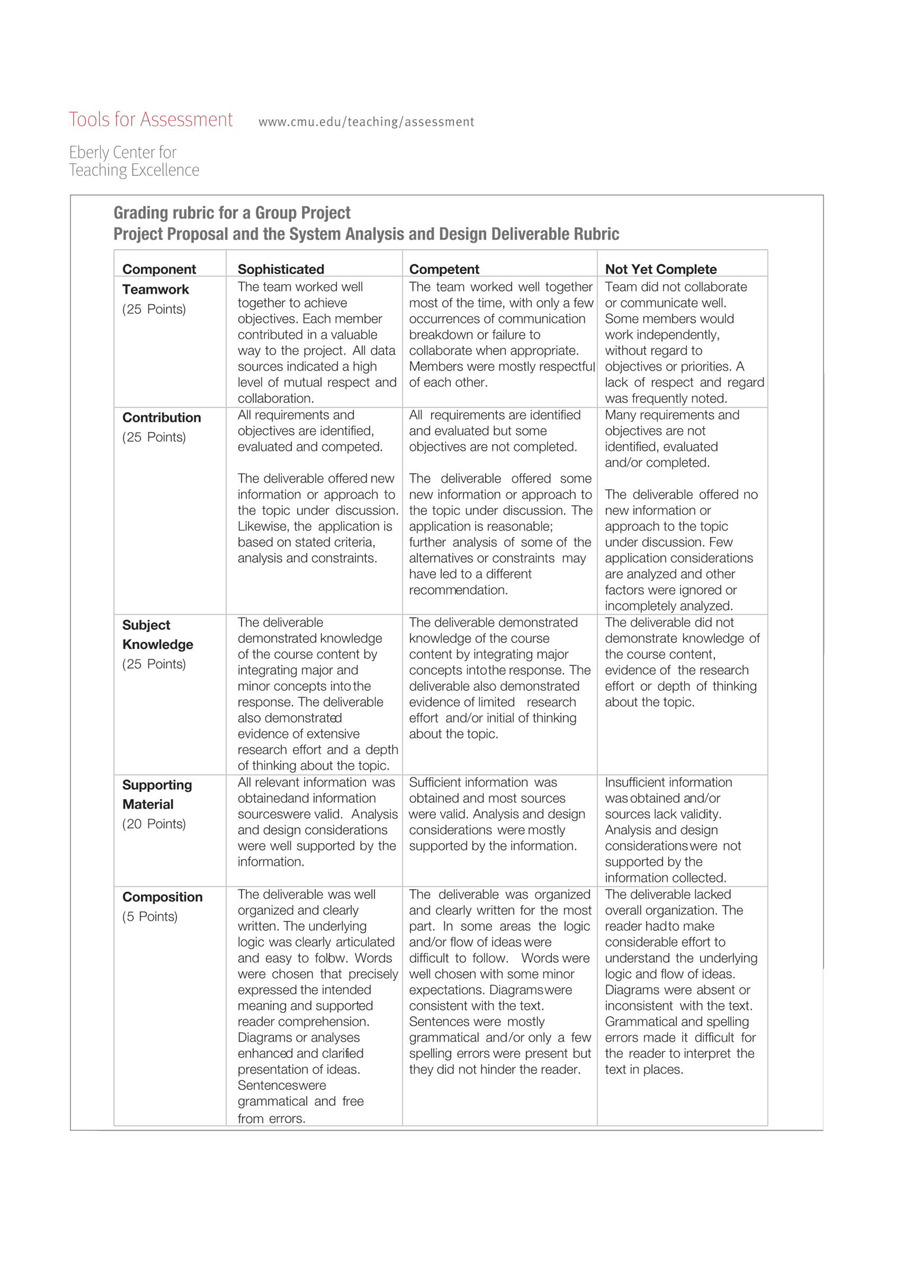
Group Project Rubric Template
A group project rubric is used to assess the performance of a group of individuals assigned the same task. The rubric considers factors such as teamwork, member contributions, subject knowledge, presentation skills, organization, content, and any other. A group project template is a simple tool for collectively assessing team members.
Download: Microsoft Word (.docx)
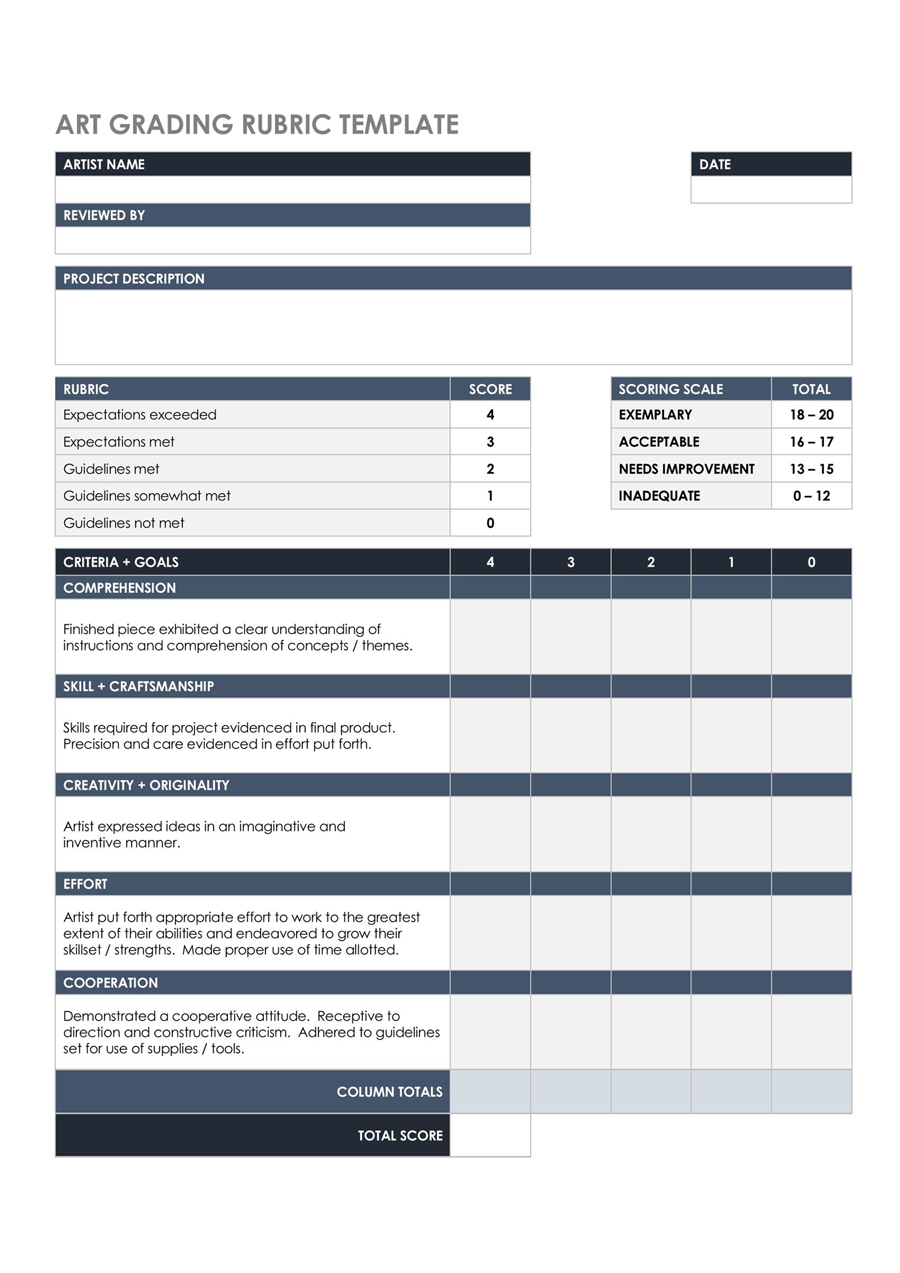
Art grading rubric template
A type of rubric template used for grading art projects. It will cover aspects such as subject comprehension, skill and craftsmanship, originality, creativity, and other criteria that can be used to grade art. This type of rubric template will vary depending on the type of art.
Download: Microsoft Word (.docx)
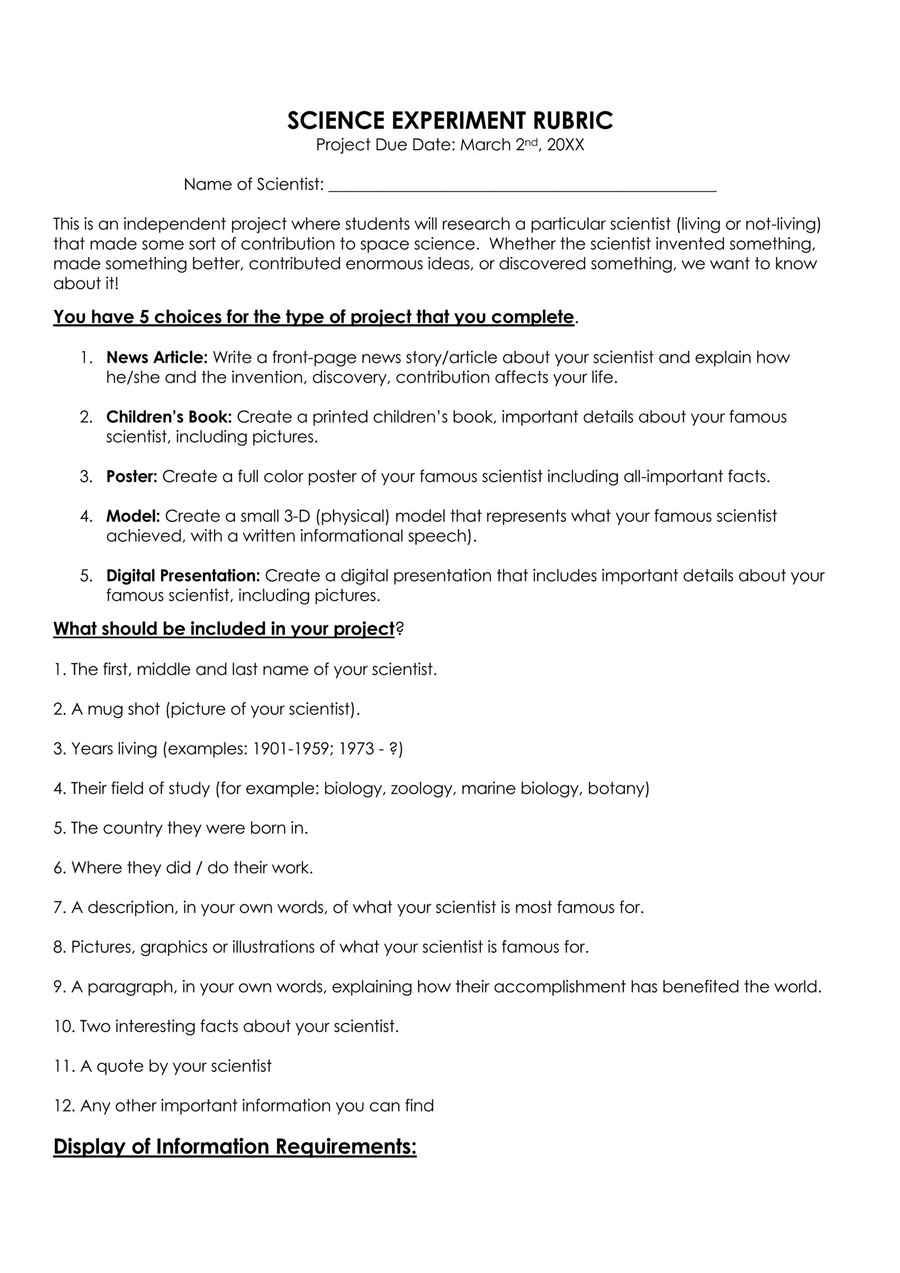
Science Experiment Rubric Template
Science projects can be evaluated using rubrics. Examples of factors considered when assessing a science project are experimental hypothesis, design, materials, procedure, data collection, analysis, discussion, and presentation skills.
Download: Microsoft Word (.docx)
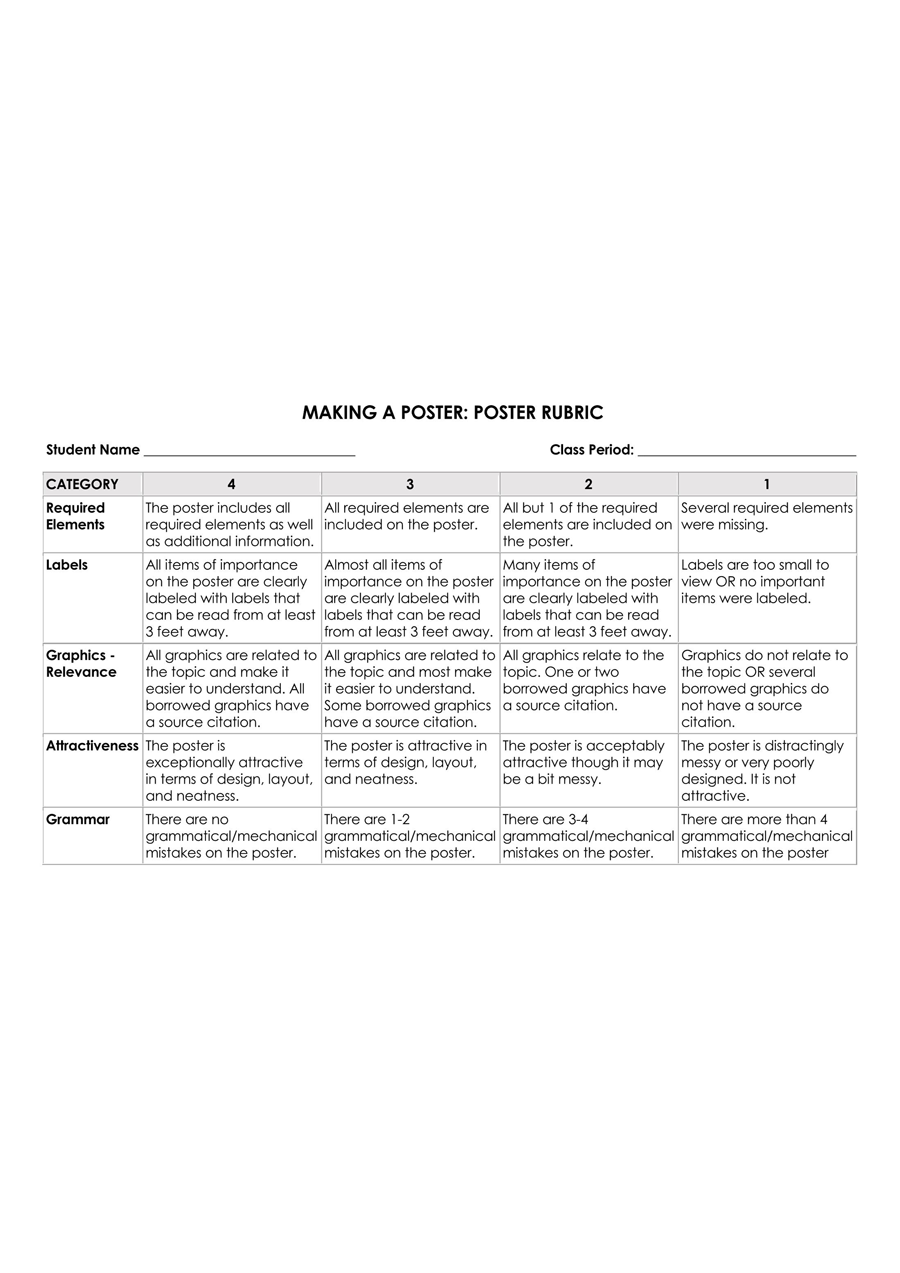
Poster Rubric Template
A poster rubric template is used to evaluate poster assignments, commonly utilized in elementary school. Criteria used include required components, graphics used, presentation appeal, creativity, content, and grammar. Students can grade each student accordingly.
Download: Microsoft Word (.docx)
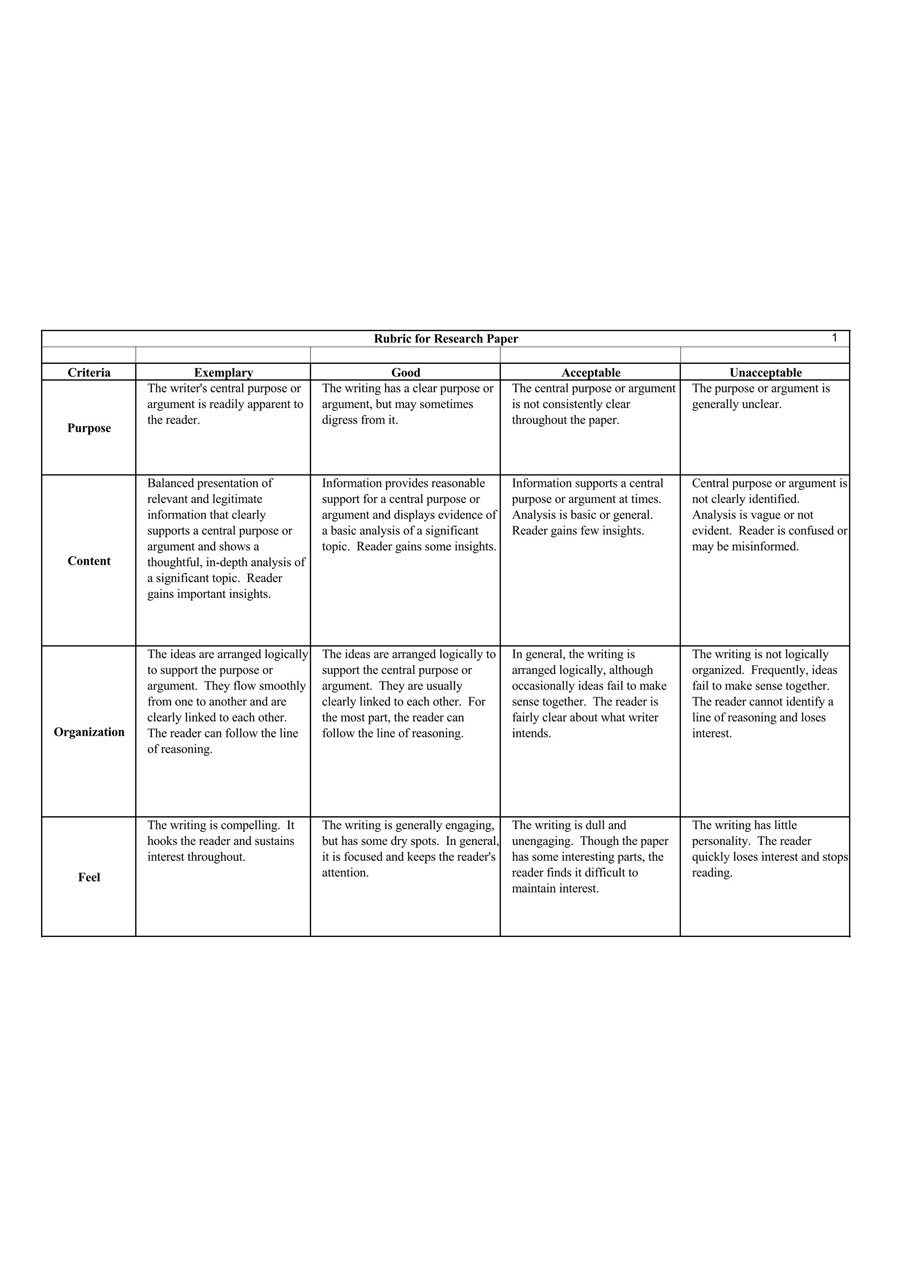
Research Project Rubric Template
Rubrics can be used to evaluate and score research projects, written reports, and other written assignments such as dissertations, essays, etc. Common criteria used in research project rubrics include objectives, content, format and structure, writing skills, analytical skills, use of references, submission, etc.
Download: Microsoft Word (.docx)
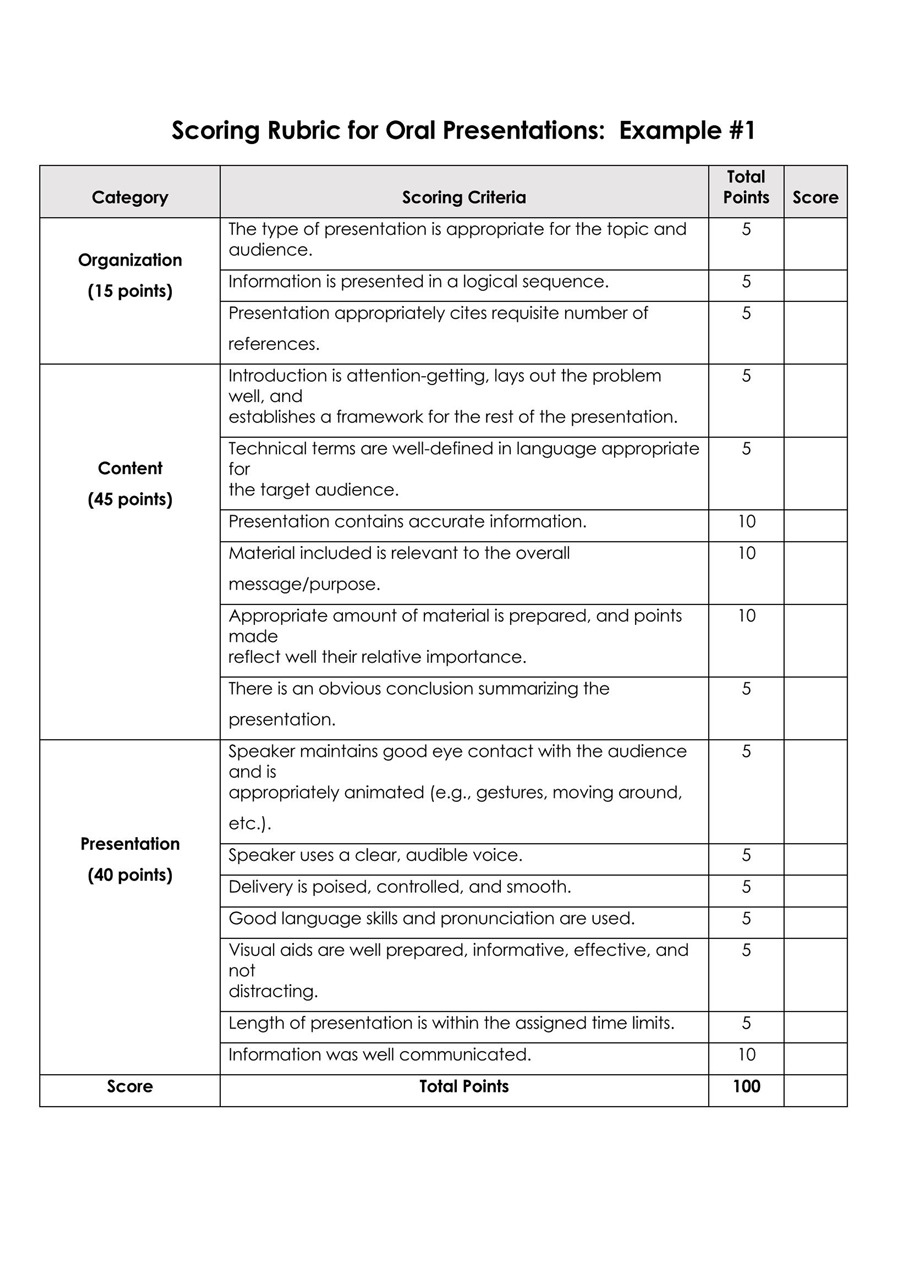
Oral presentation rubric template
Presentation is a common means of reporting in both academic and business settings. The effectiveness of a presentation can be established through a rubric. Elements of a presentation that need to be assessed are oral communication and presentation skills, delivery, visual elements, organization, supporting material, etc. Rubrics can be used by lecturers, professors, and supervisors to grade presentations.
Download: Microsoft Word (.docx)
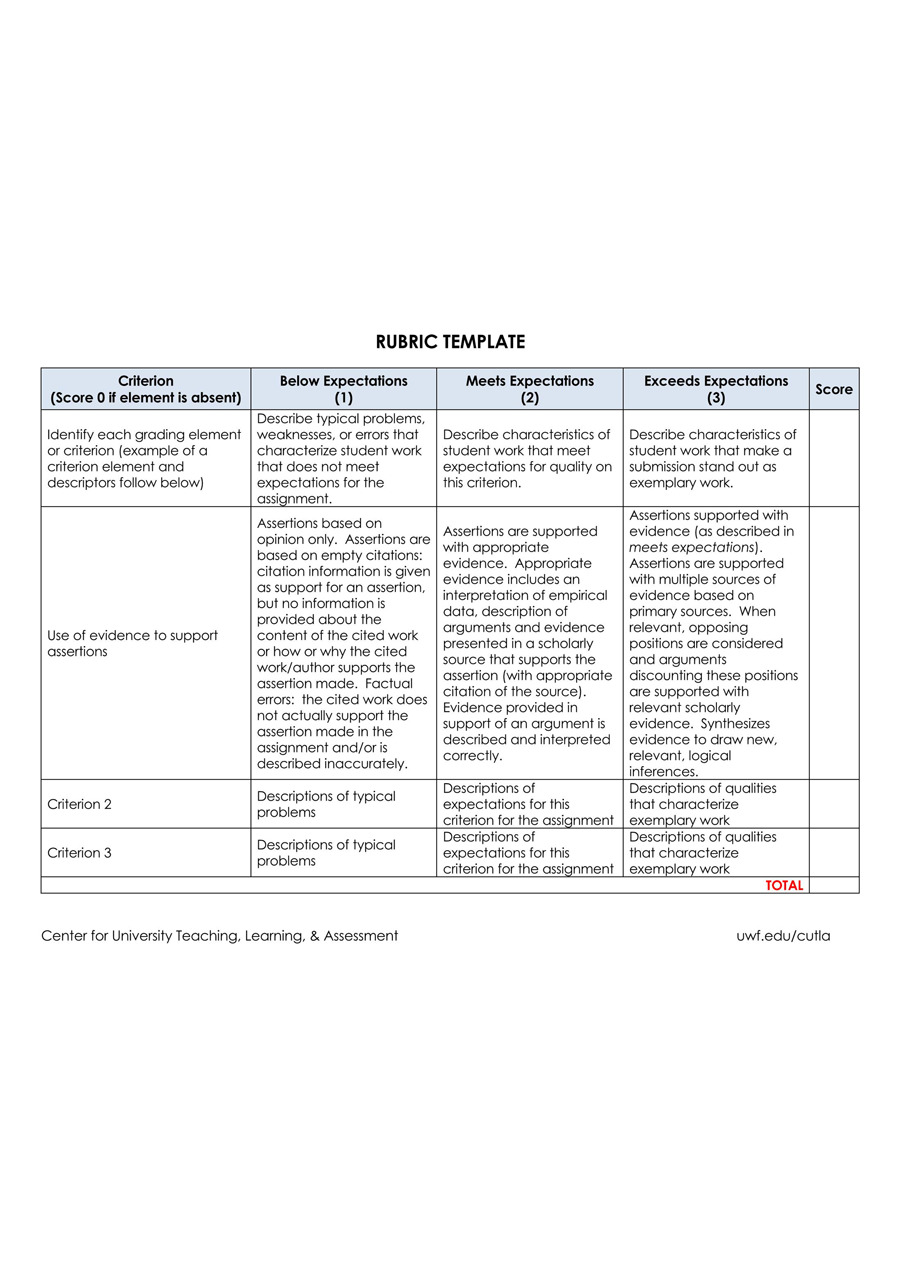
Grading rubric template
A type of rubric used to assess any type of project, assignment, or work performance. It covers the key elements of a performance success such as comprehension, skill, creativity, effort, cooperation, etc.
Download: Microsoft Word (.docx)
How to Create It?
A good rubric template has to be detailed to give an accurate assessment. It must outline all the elements while giving comprehensive descriptors.
Below are the steps for developing a template:
Create a task description
The first step is to identify the tasks or areas of assessment. The task description(s) indicate the actions that the student or employee is expected to complete and will often be influenced by the assessor’s objectives. Factors that determine the task description include the importance of each task, performance assessment procedure, level of feedback expected to be given, performance standards, and grading system to be adopted.
EXAMPLE
For a teacher, the task could be:
A ten-page book review of Romeo and Juliet.
Identify the criteria (rows)
Next, the assessor should identify the criteria they will use to assess the quality or grade of performance. Criteria are used to assess the student or employee’s level of skills and knowledge; identify at least four criteria and at most 7. Different assignments will have different criteria. Eliminate any non-crucial criteria.
The criteria can be grammar, originality, content, and clarity in the example above.
Determine a performance rating scale (columns)
Afterward, determine the grading system for the rubric template to assess the performance level at each work criterion. A performance rating scale should cover the following three levels of performance:
- Level 1: Level 1 represents the optimal expectations of the assessor. Therefore, the characteristics that describe the best work or meet the assessor’s expectations should be determined.
- Level 2: Level 2 should represent intermediate categories or levels of performance, which can be more than one. A description of the characteristics of these levels should be determined.
- Level 3: The last category of performance level should give characteristics of an unacceptable level of performance.
The performance rating scale can be given as; ranks such as numbers (1, 2, 3, 4) or grades (A, B, C) or as descriptors such as excellent, good, satisfactory, and needs improvement. The example given earlier can use these descriptors. Each character and definition of the performance levels should be mutually exclusive.
As a result, an even number of performance levels should be used to avoid categorizing levels with cross-over characteristics and descriptions. Performance levels should be supplied in the columns and must follow an order, preferably best to worst.
Write a description for each performance level
The assessor should then provide short, measurable, and specific descriptions or statements for each performance level. The description should be able to assess and categorize assignments that are being assessed. Ensure the template is limited to one page to make it easier to use.
Test rubric
The template is then tested by applying it to an assignment and sharing the assessment results with colleagues. Have them evaluate how effective the rubric is in grading performances based on shared organizational grading systems and shared expectations.
Get feedback and revise
Once feedback is obtained, review the template and incorporate any improvements required or remove any notable issues.
Smart Tips to Develop a Good Rubic
How well a rubric is developed influences the accuracy of its results (scores). Below are essential tips to keep in mind when creating one:
- Find and adapt an existing rubric: Due to the divergent expectations of different assessors, it is rare to find an existing one that highlights all the expectations of a project or assignment. While a project-specific can be created, it may take time. Therefore, it is always best to look for a closely resembling rubric, maybe from a colleague, and modify/adapt it to fit the situation.
- Evaluate the template: Review the template to add or remove. An effective one must relate to the assessor’s expectations and be feasible for the project. Irrelevant elements should be removed.
- Collect samples of student work: Collect samples of the student or employee performance that meet the expectations at each performance level to act as benchmarks or exemplars of quality at the different levels. Samples are essential for highlighting characteristics at different scale levels.
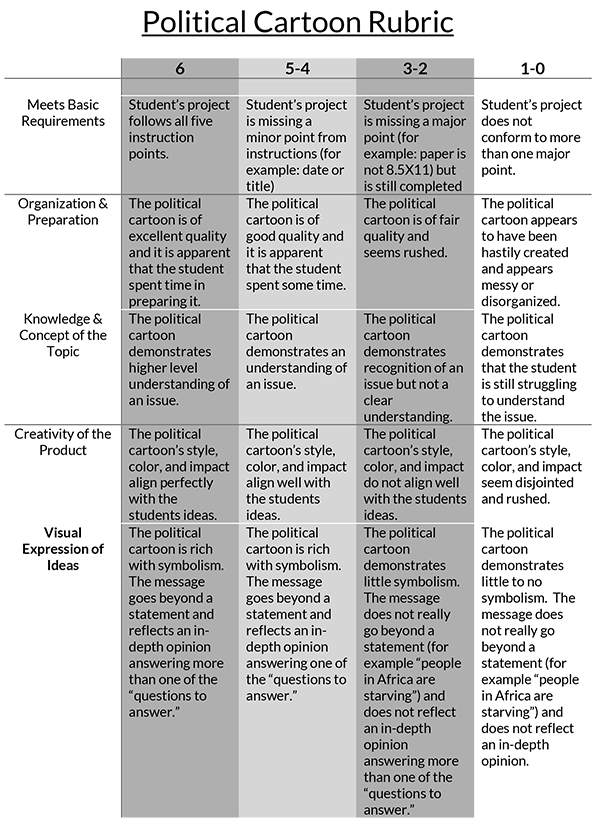
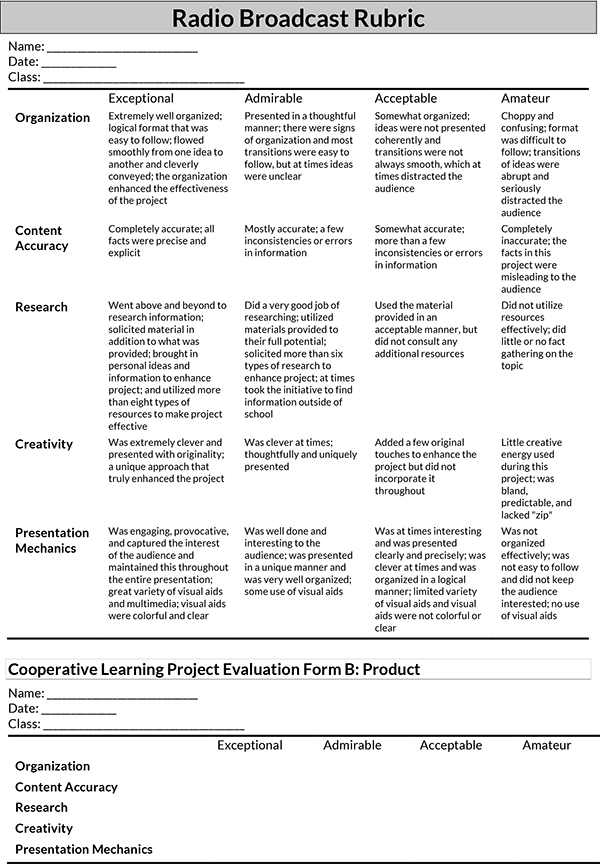
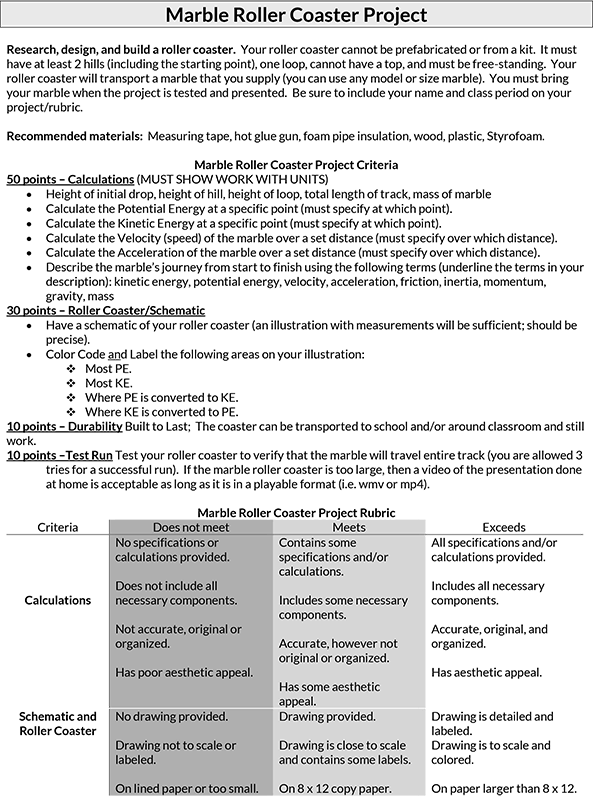
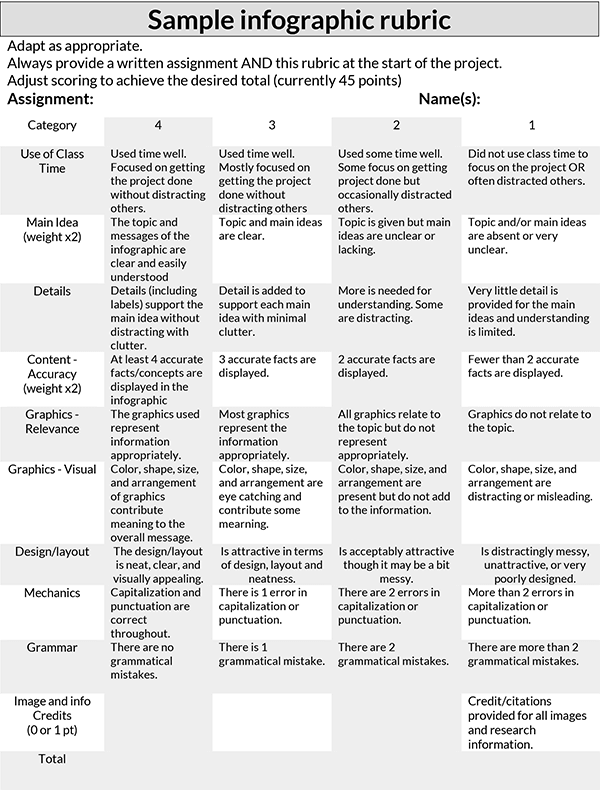
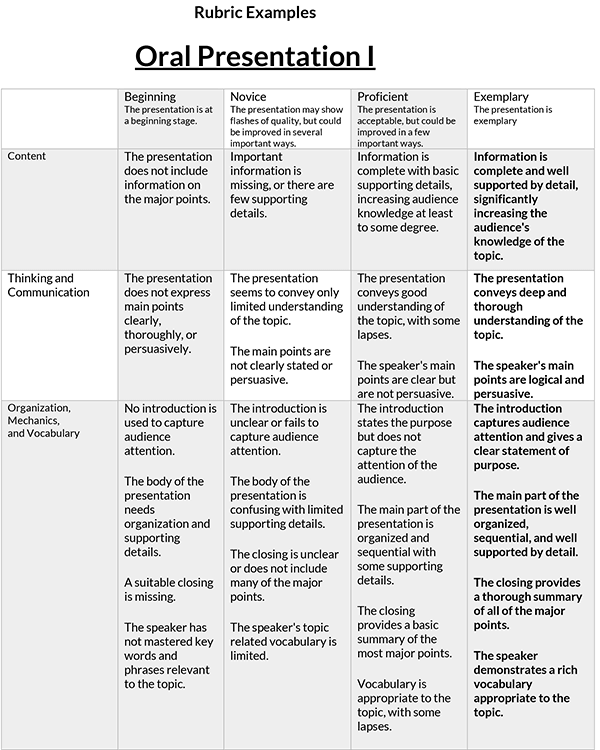
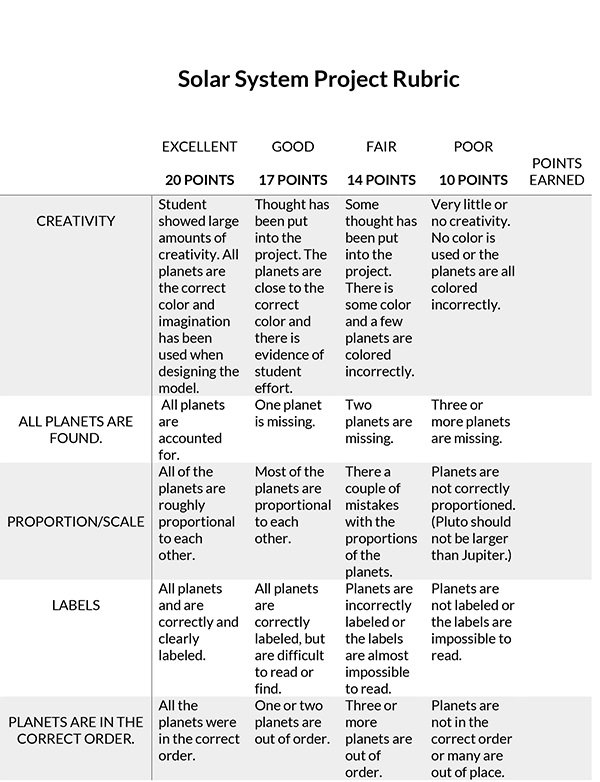
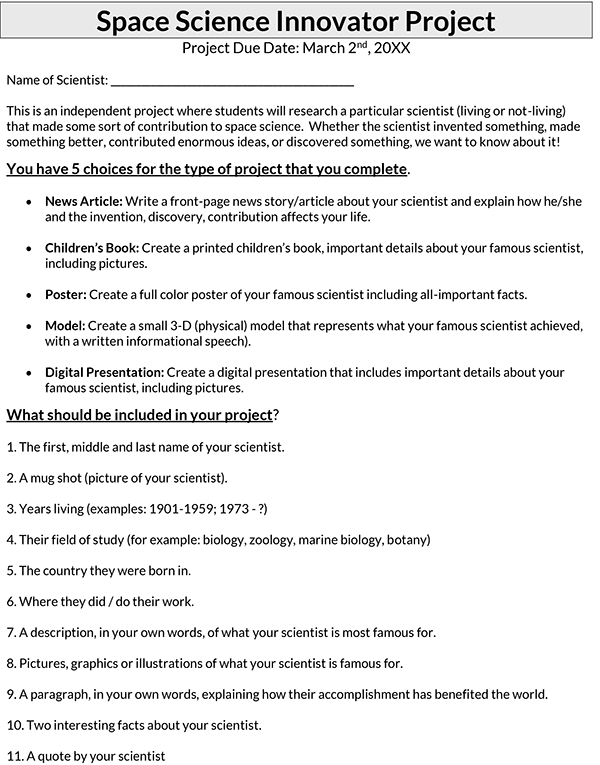
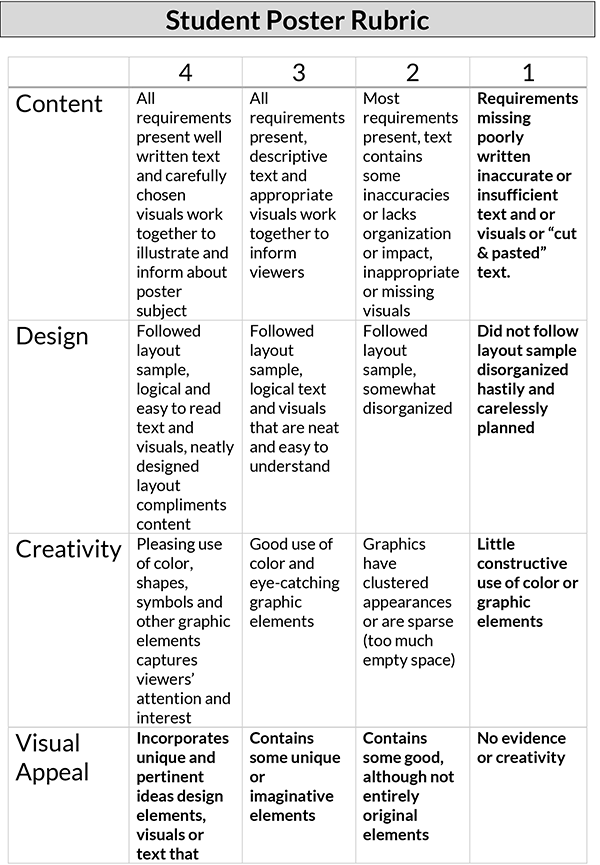
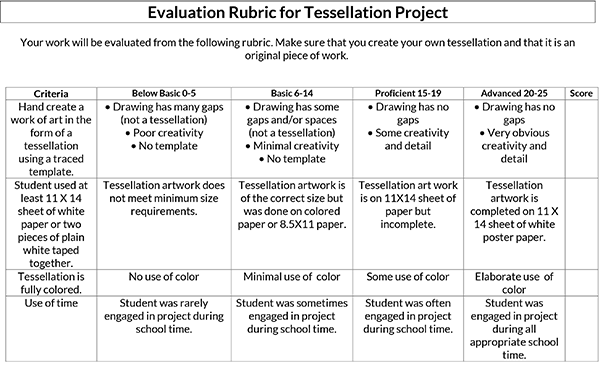
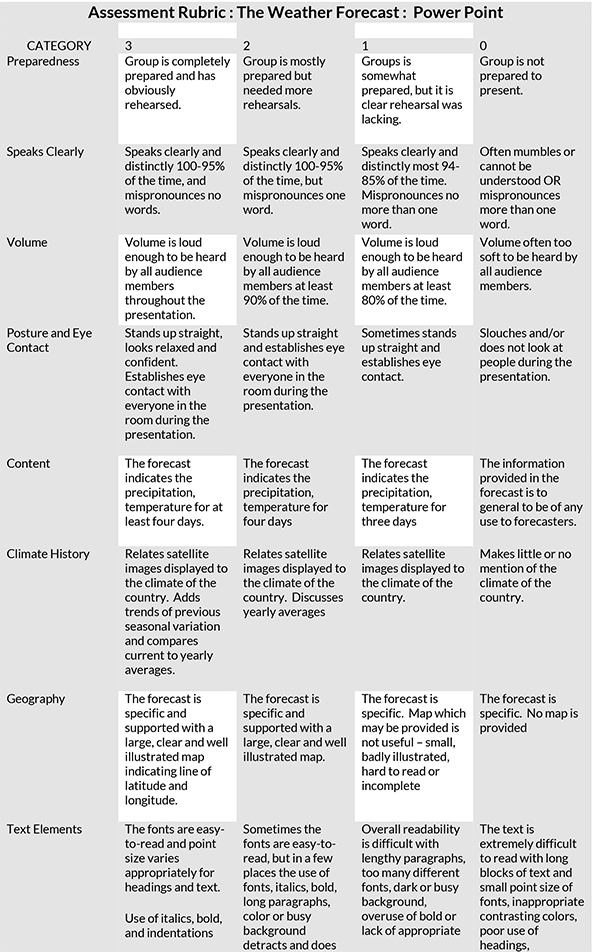
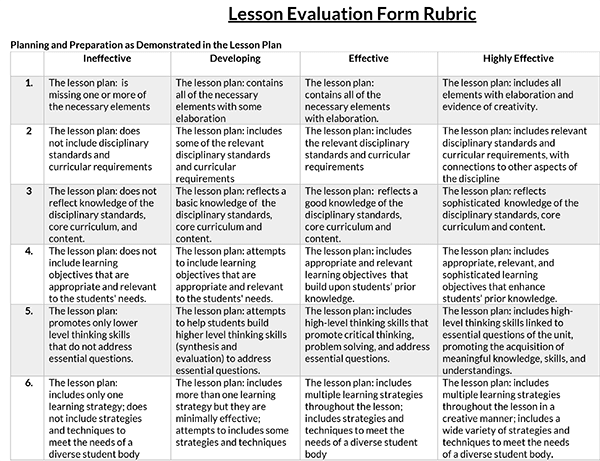

Pros and Cons of It
The use of rubrics has its advantages and disadvantages. This article will look at the pros and cons that teachers and employers should be aware of when assessing the performance of their students and employees, respectively.
Pros
One of the merits template is its ability to give feedback to the person being assessed. Feedback is a crucial element in helping students and employees identify their strengths and weaknesses and promoting growth in performance. Students and workers can know the areas that led to a poor assessment report and learn how to improve on these areas.
They promote metacognition development by promoting critical thinking among students and workers. Rubrics justify scores and grades, demonstrating that students earned their awarded grades rather than just being given them. This fosters better performances in the future as the person being assessed becomes aware of what is expected of them.
Rubrics are criterion-based rather than norm-based. This means they assess performance based on the set criteria rather than relativity – conscious or subconscious comparison with other works. By having criteria to measure performance, assessors can make better decisions and limit bias when awarding scores.
Fairness is integral in academics and business. Their use ensures a fixed set of standards is used in evaluating a student’s or employee’s performance. Therefore, regardless of how divergent the student’s or employee’s approach is, it is graded depending on how effectively it satisfies the assessor’s expectations.
Cons
There is no standard or fixed scale for rubrics. Assessors can use scales as they see fit, and in some cases, this may compromise its effectiveness. On extreme scales, too few or too many options lead to an ineffective one because too few options do not offer enough details. Too many options are difficult to interpret due to the negligible discrepancies between adjacent options.
They often use inconsistent language that may result in misinterpretations. It is recommended that parallelism and consistency be maintained throughout the description of each performance level.
For example, in a rubric that assesses the relevance of a paper to the topic, the levels can be described as follows:
- Level A – unimportant
- Level B – slightly unimportant
- Level C – moderately important
- Level D – important
The rubric has not used parallelism and consistency due to the combination of unimportant and essential definitions. A better one would be as follows:
- Level A – Least important
- Level B – moderately important
- Level C – important
- Level D – most important
Rubrics that use solid or negative language such as “Not,” “Never,” or “None” to describe poor or low-level performances are known to counter their benefits as they tend to discourage students and workers. The use of slightly, minor, or un- is advocated for.
Sometimes they tend to be vague when defining the characteristics of each performance level. Criteria should be observable and measurable, and how these are achieved should be specified when describing each scale level.
EXAMPLE
A thesis that is always strong can be characterized as specific, original, and evidence-based. In contrast, a thesis that is usually substantial can be defined as defendable and evidence-based. The characteristic “originality” distinguishes the two without relying on the subjective terms “always” and “usually.”



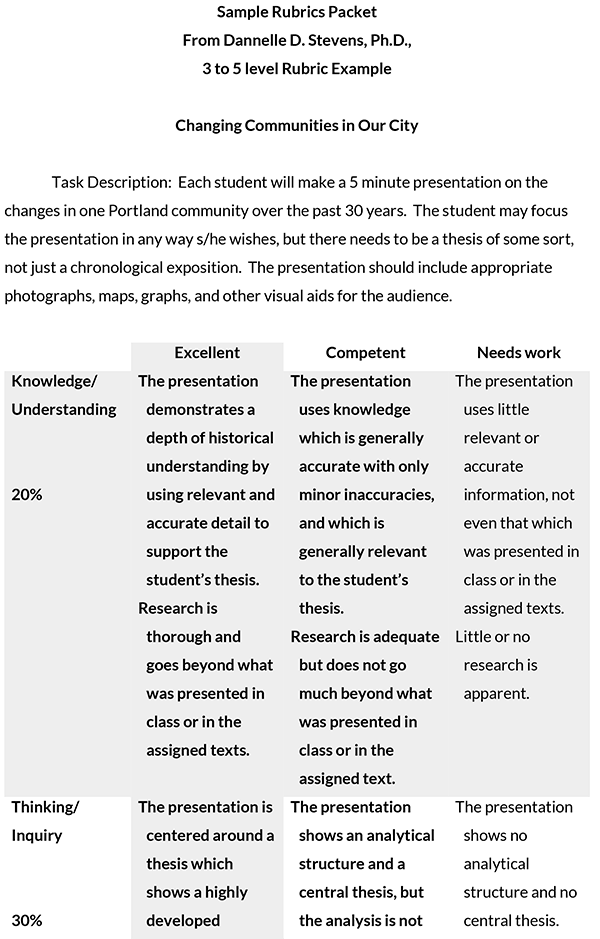
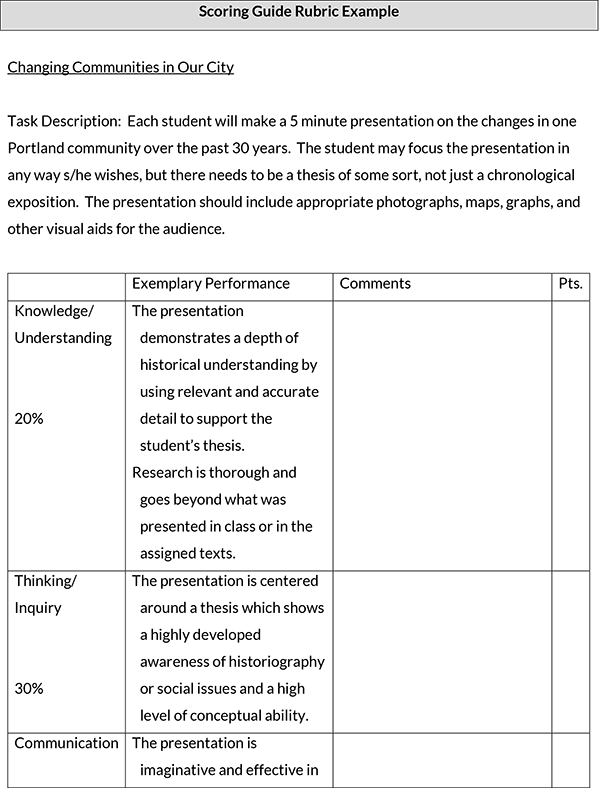
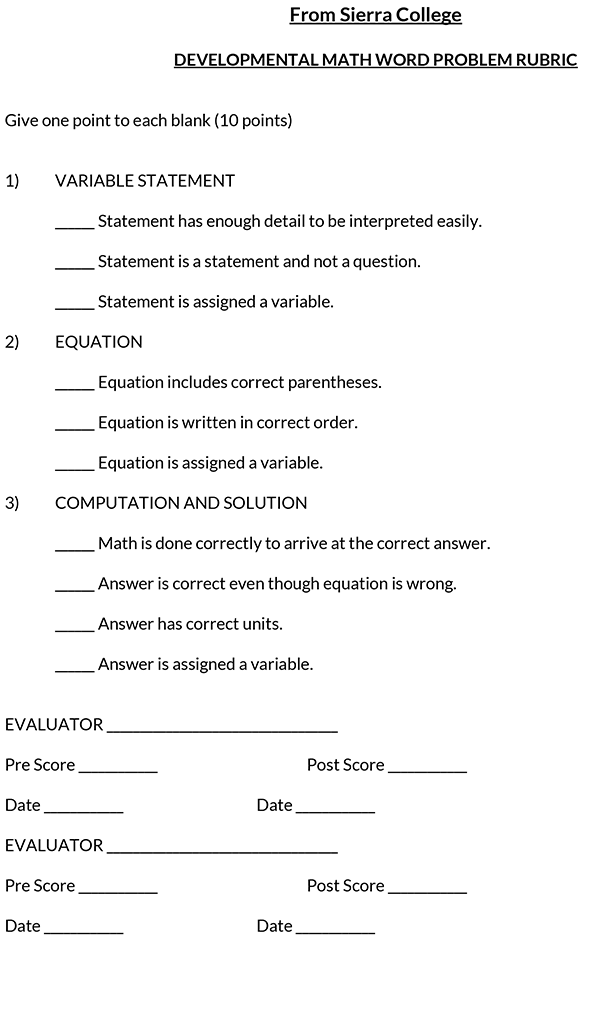
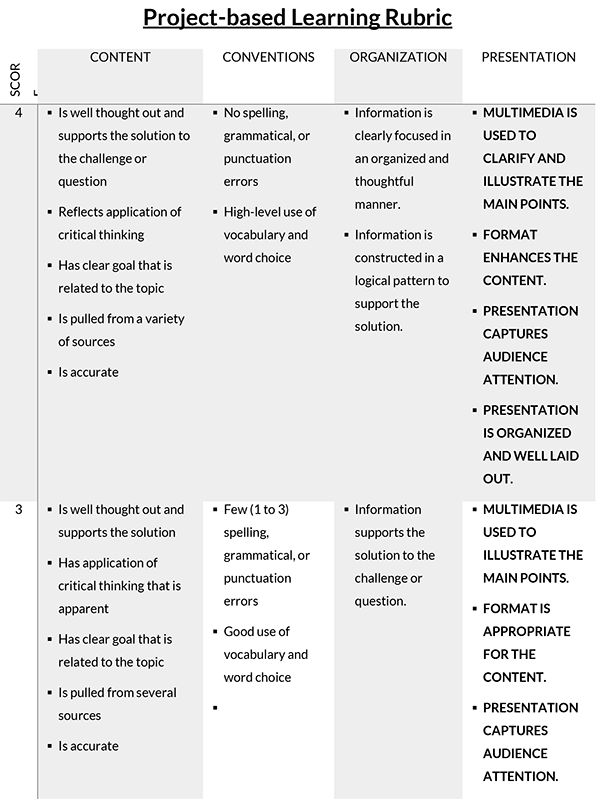
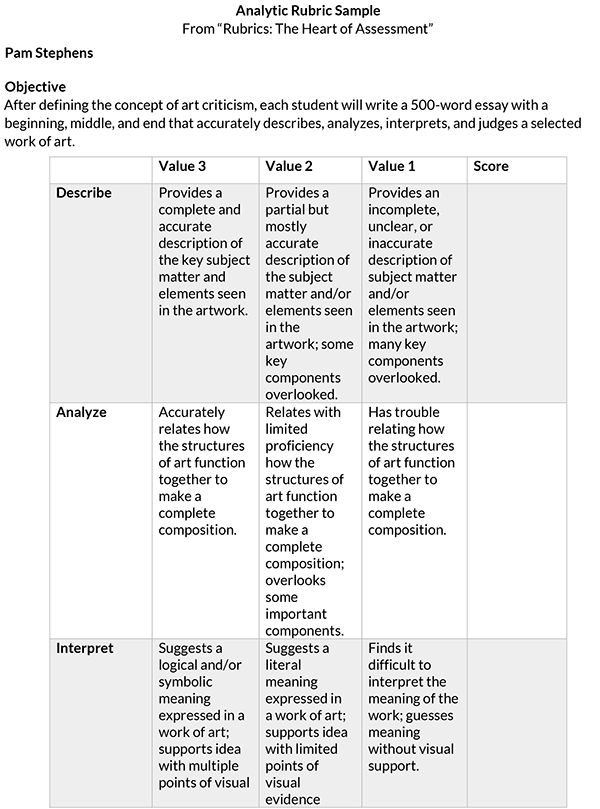
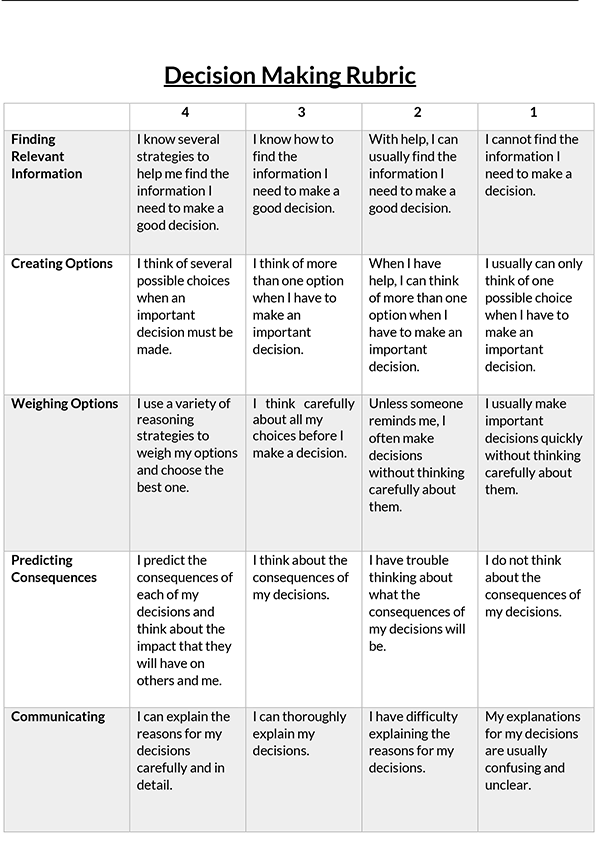
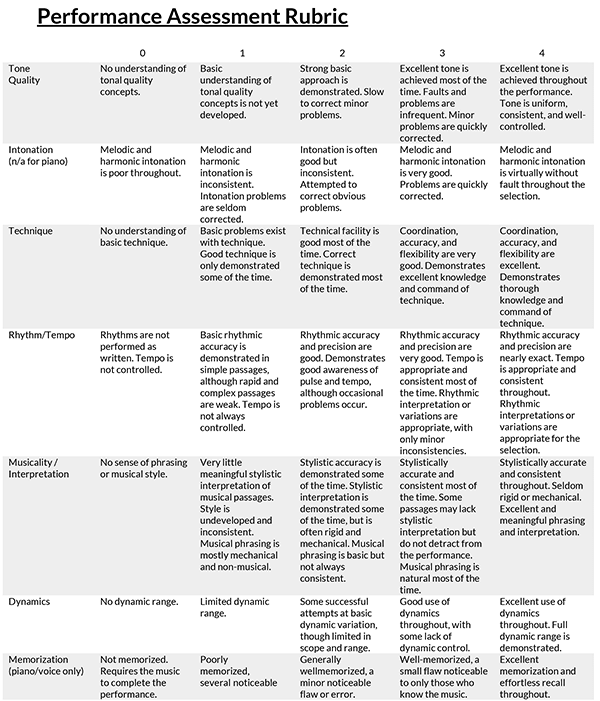
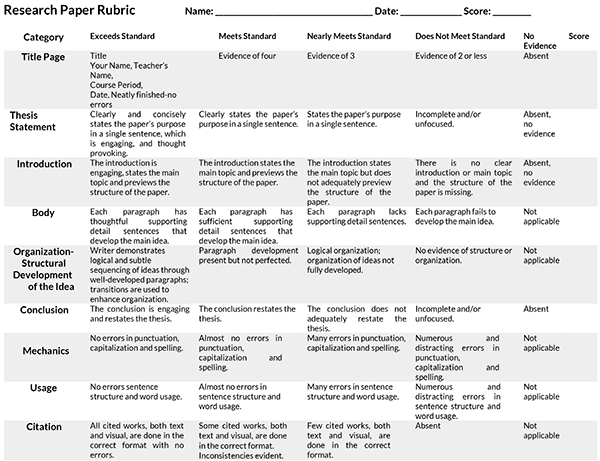
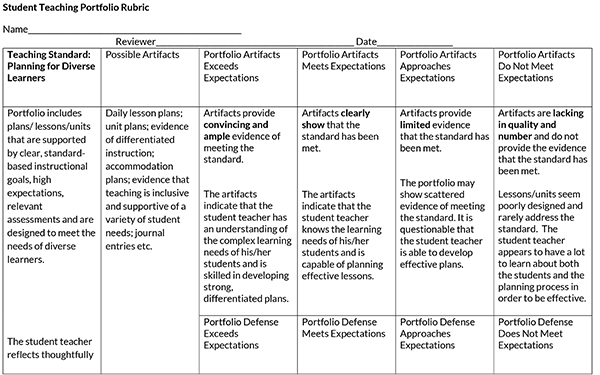
Key Takeaways
Assessments are necessary for academics and business. A rubric is an effective way of maintaining accurate and consistent student and employee performance records. They also help in offering feedback to the individuals being assessed. Therefore, more than an assessment tool, it is a communication tool between teachers/employers and students/workers.




